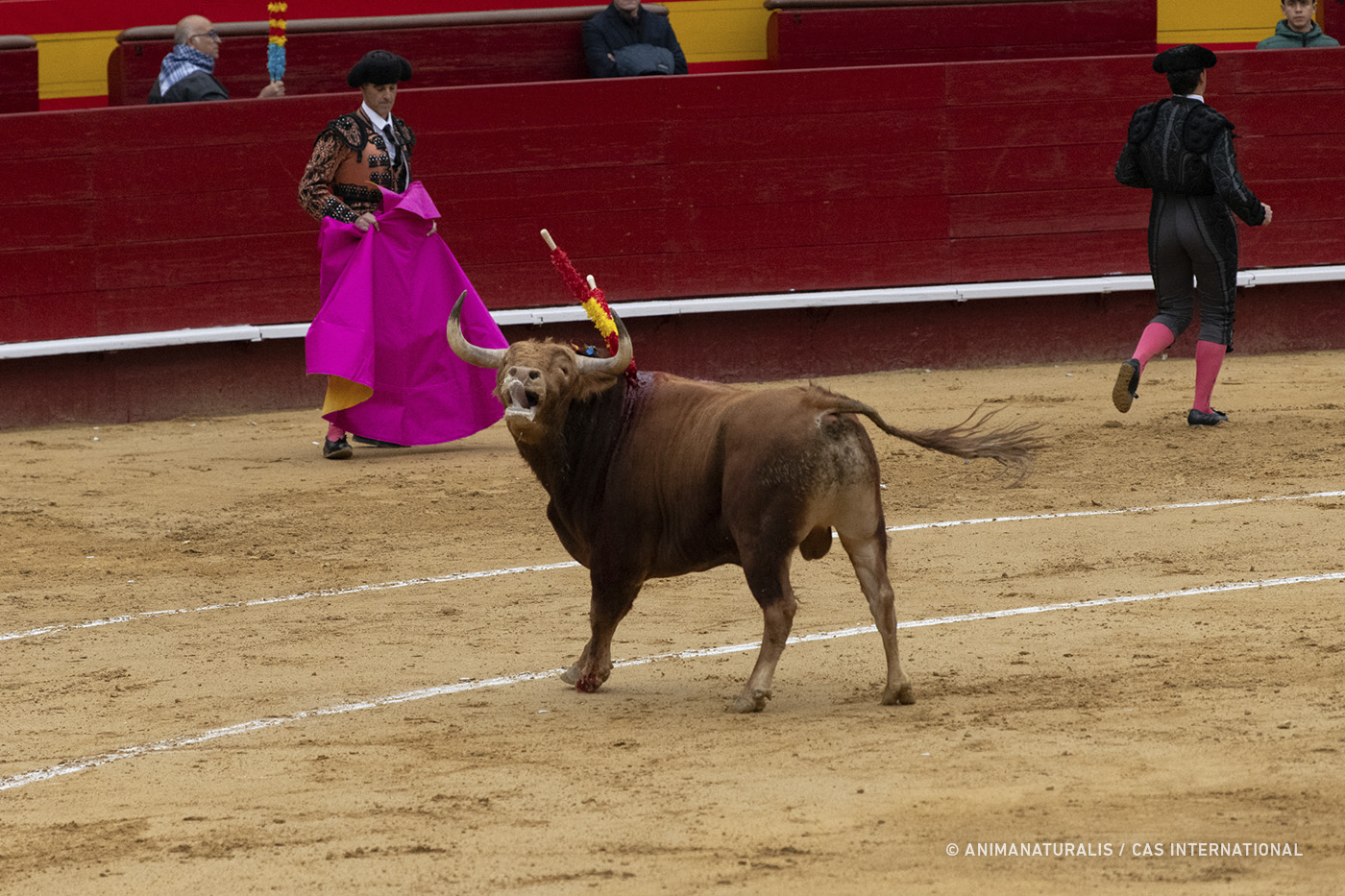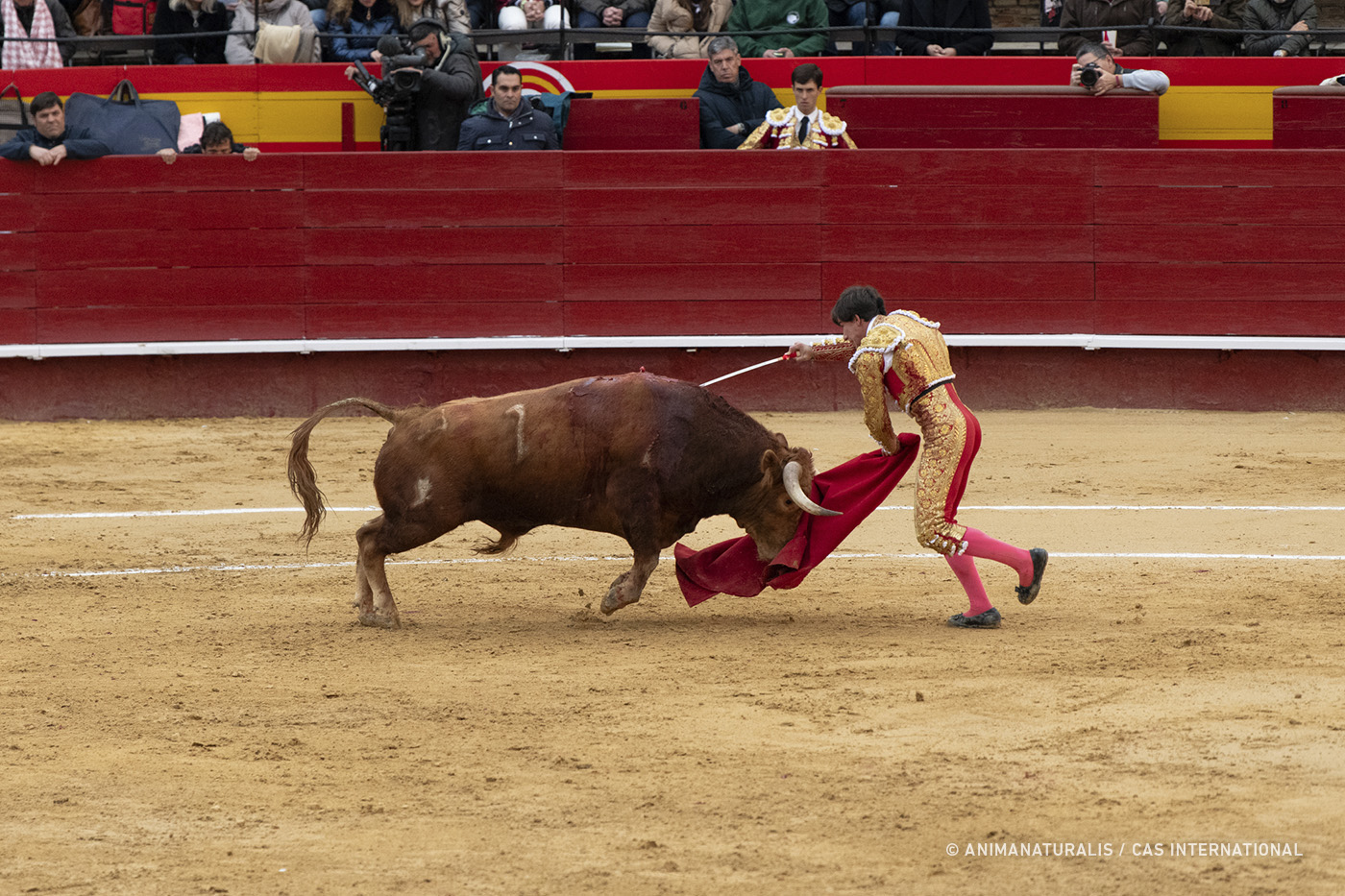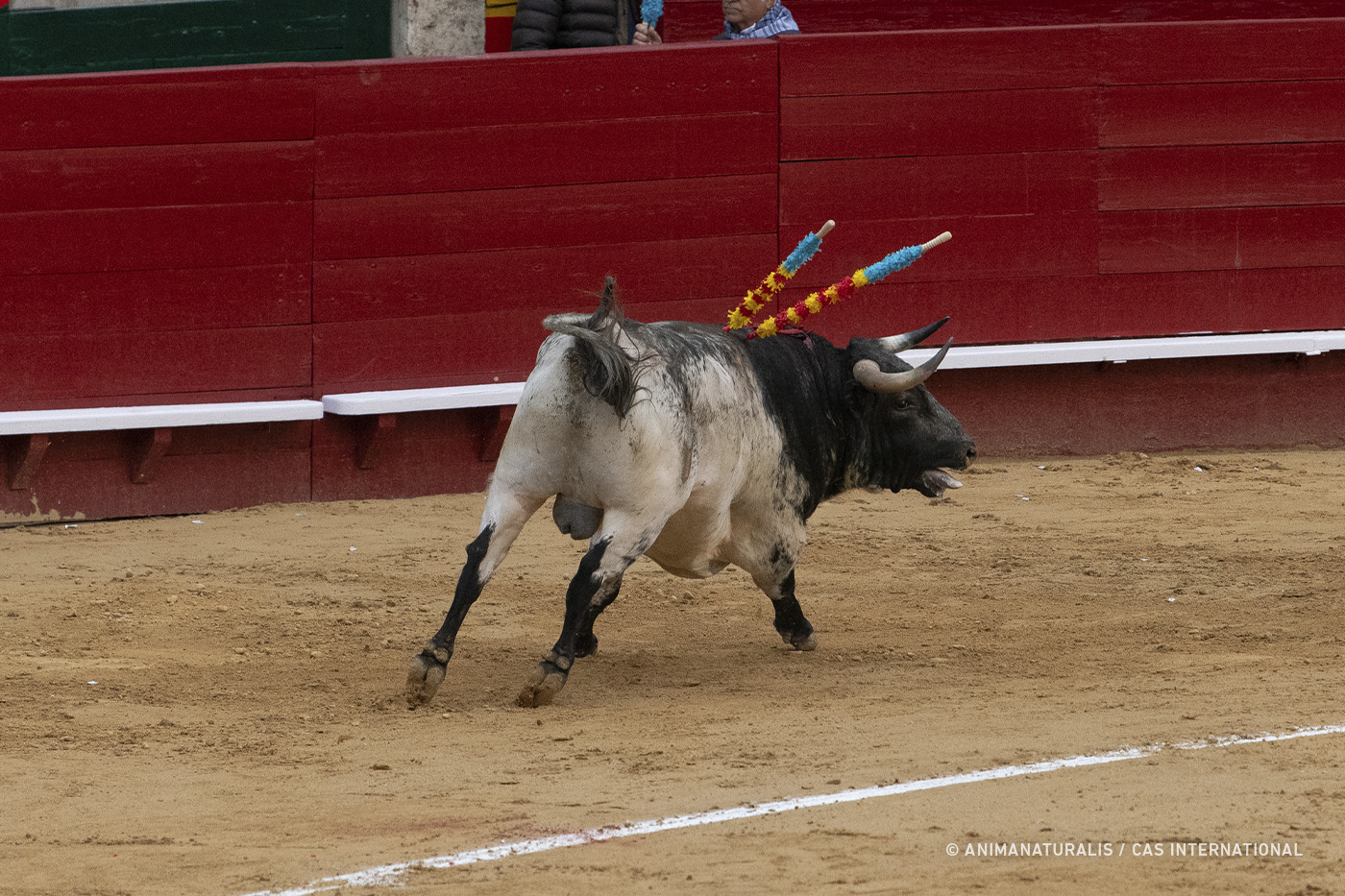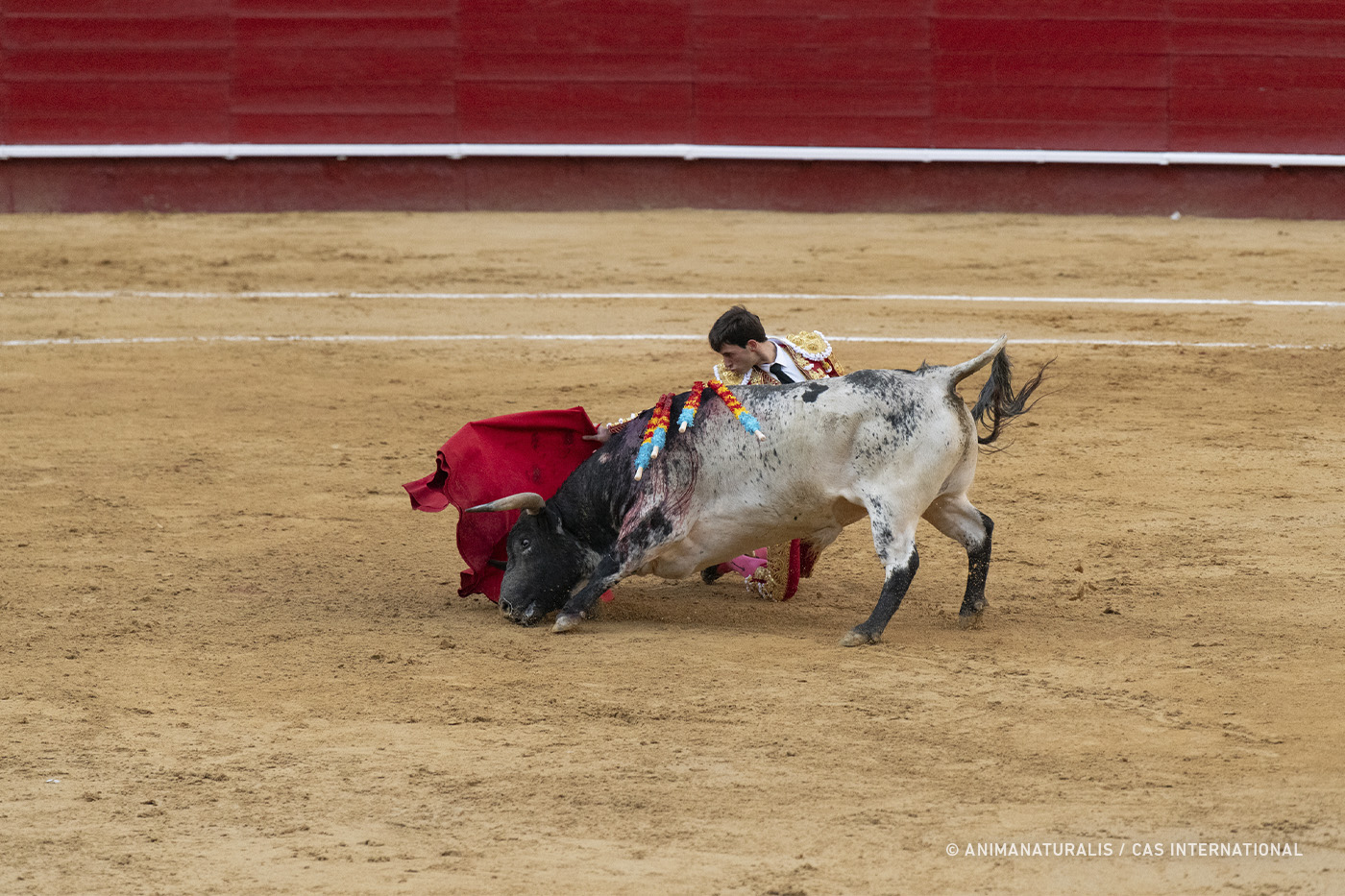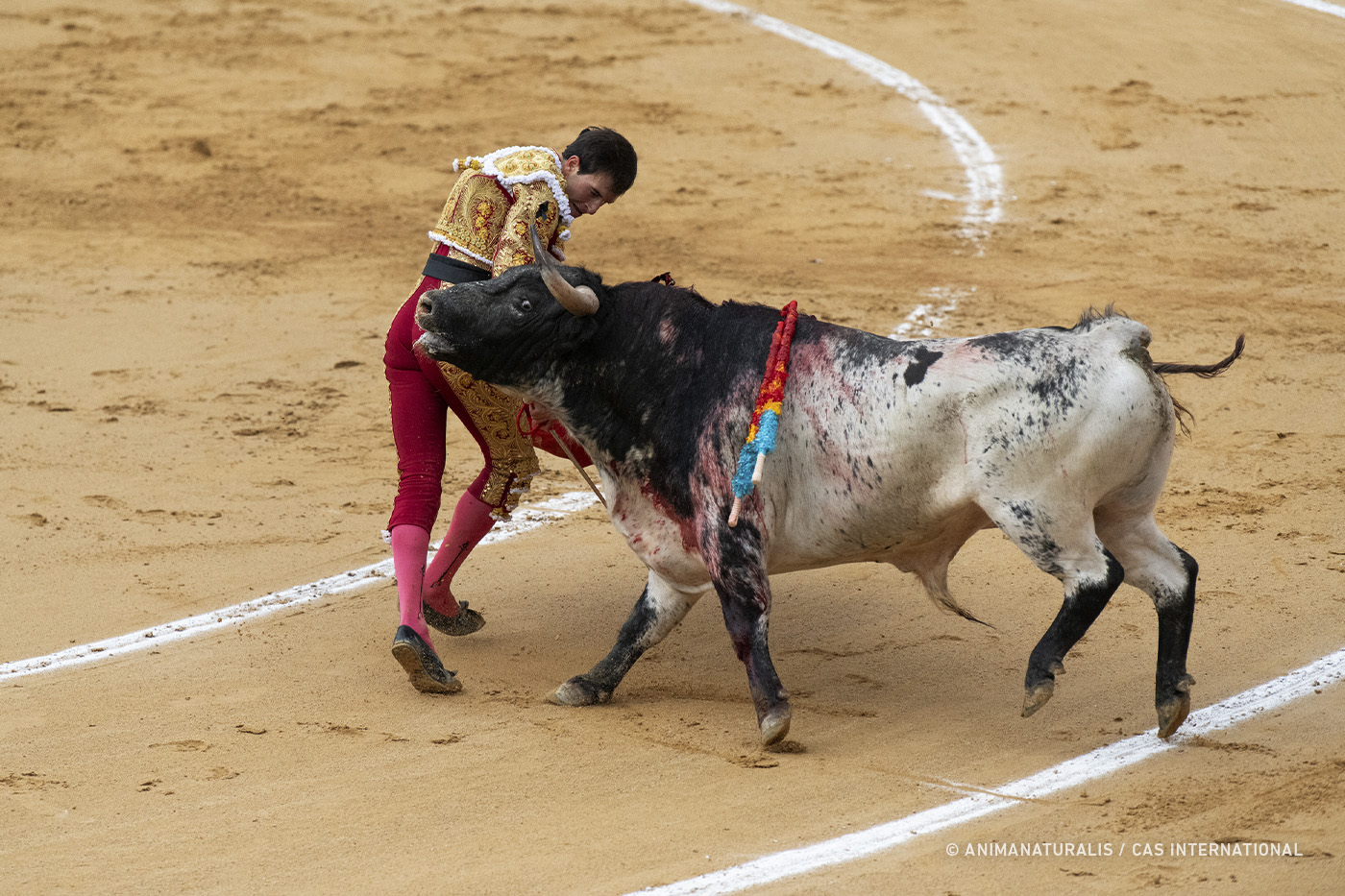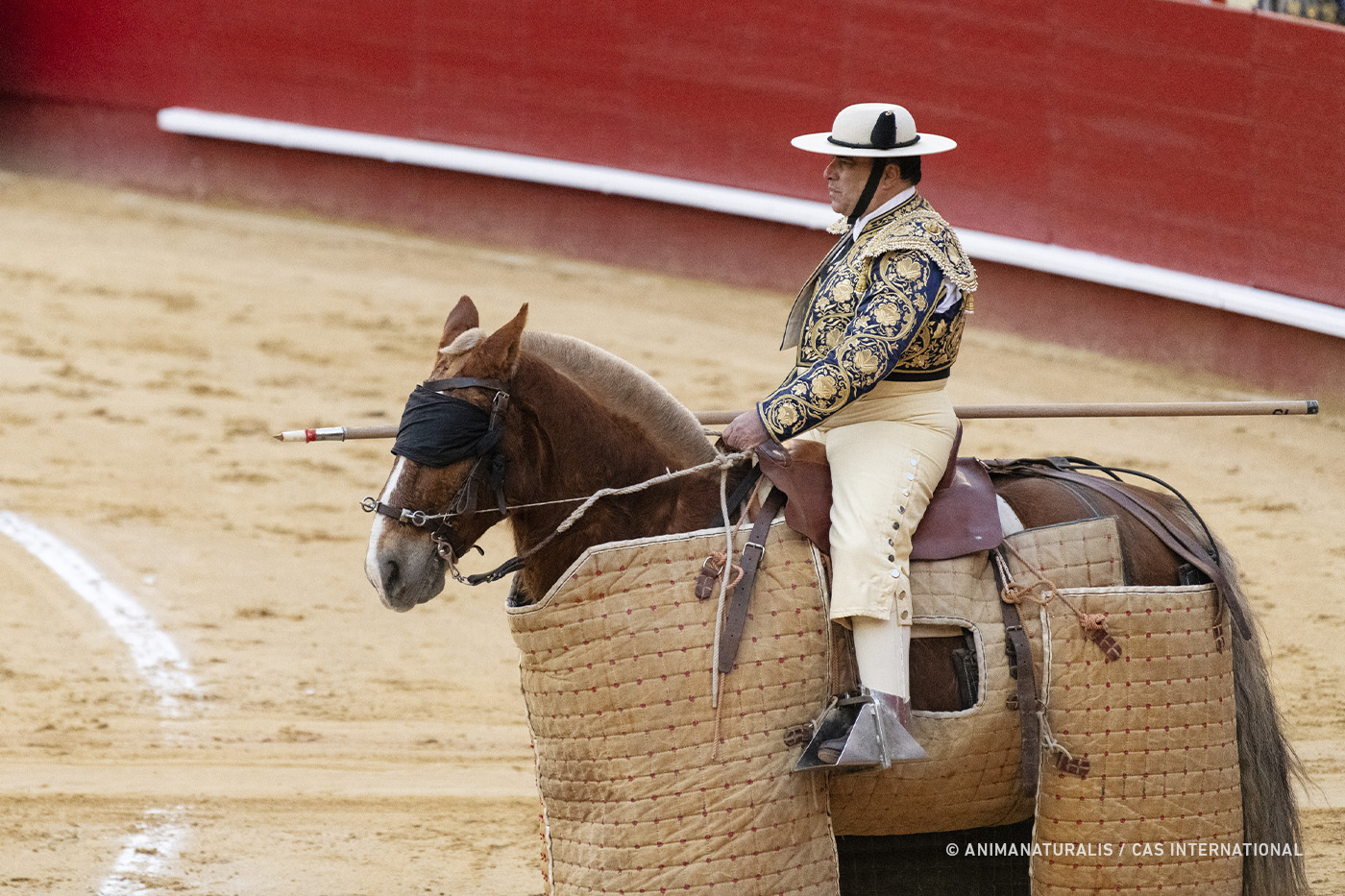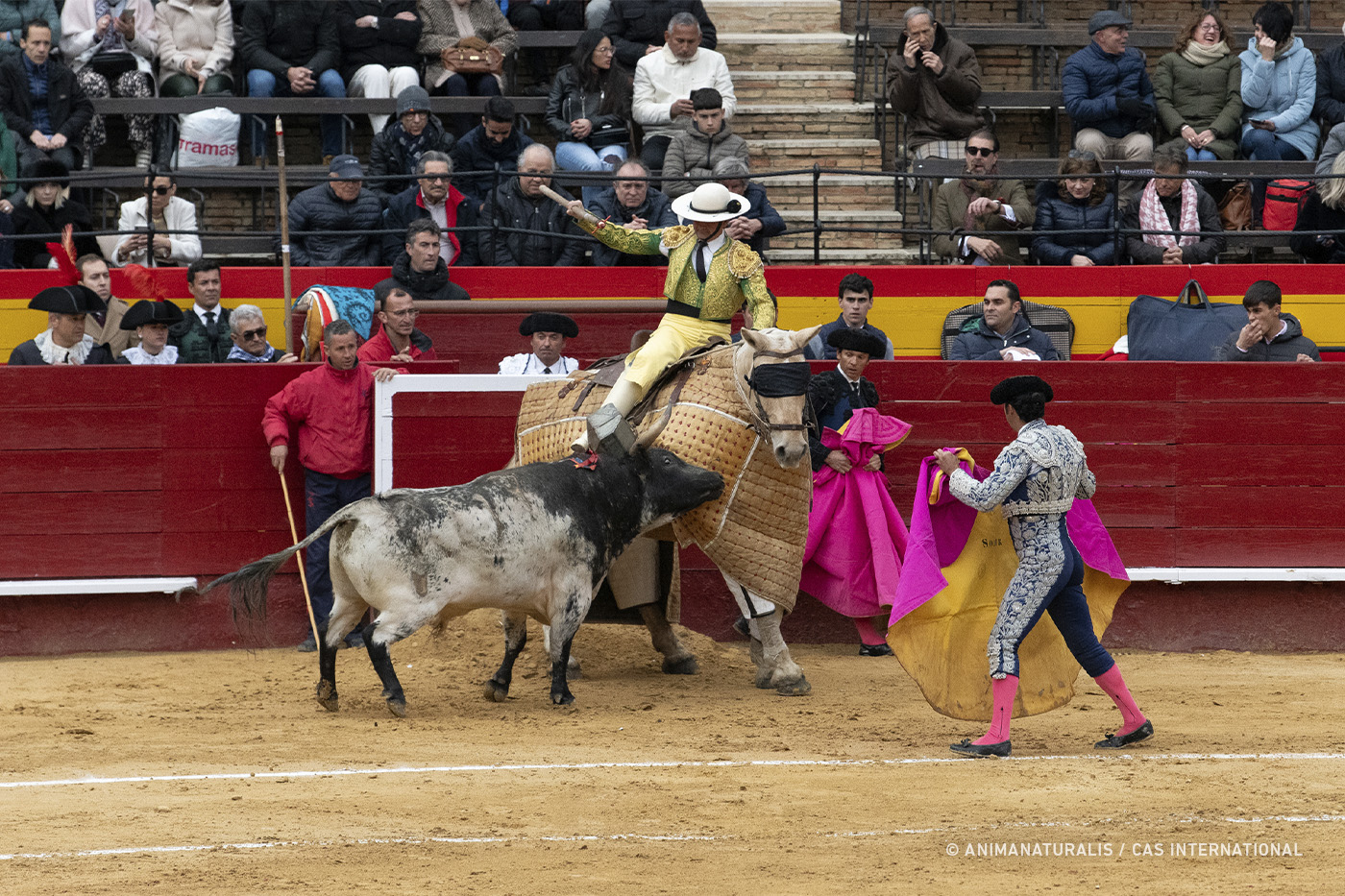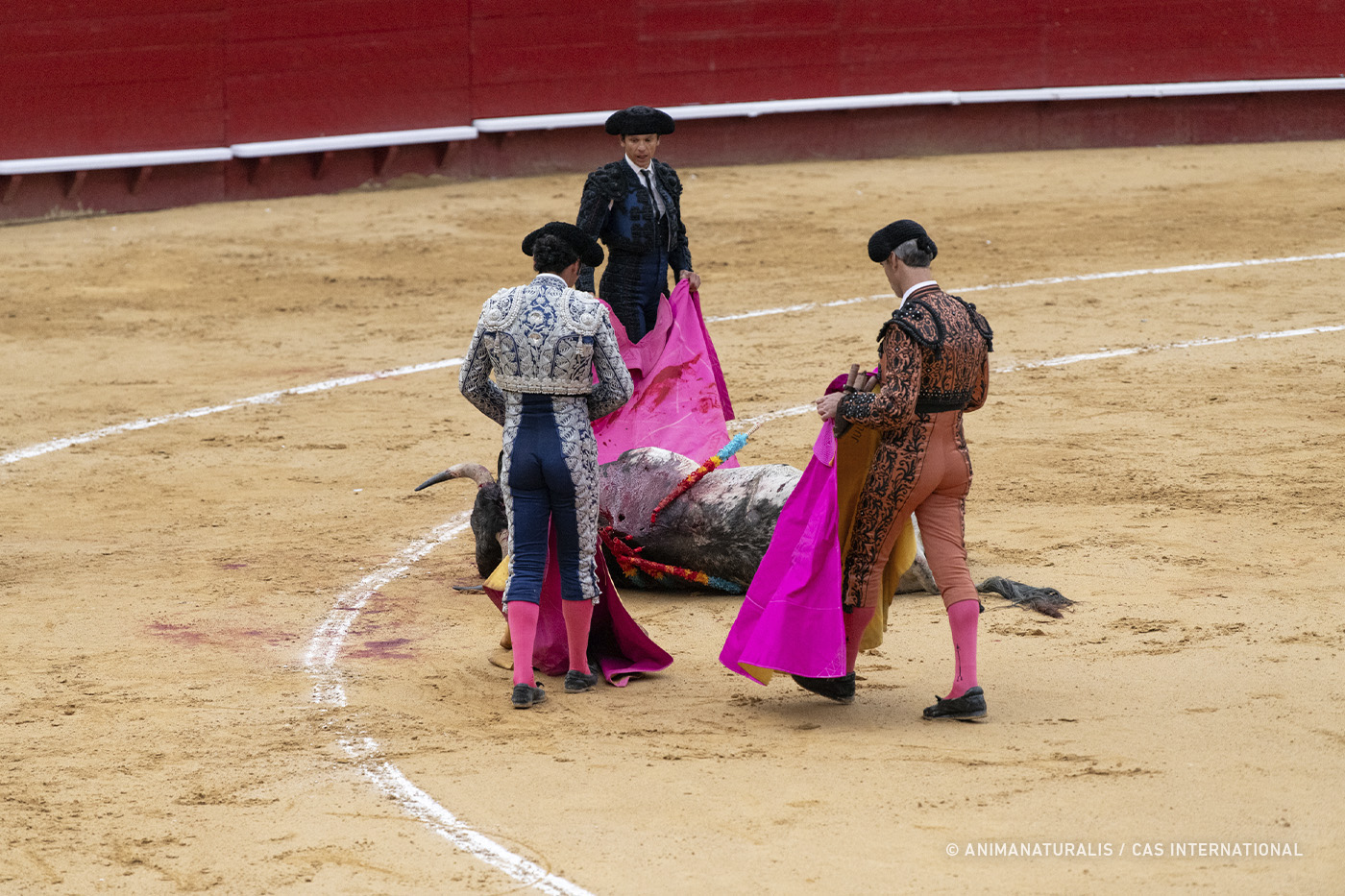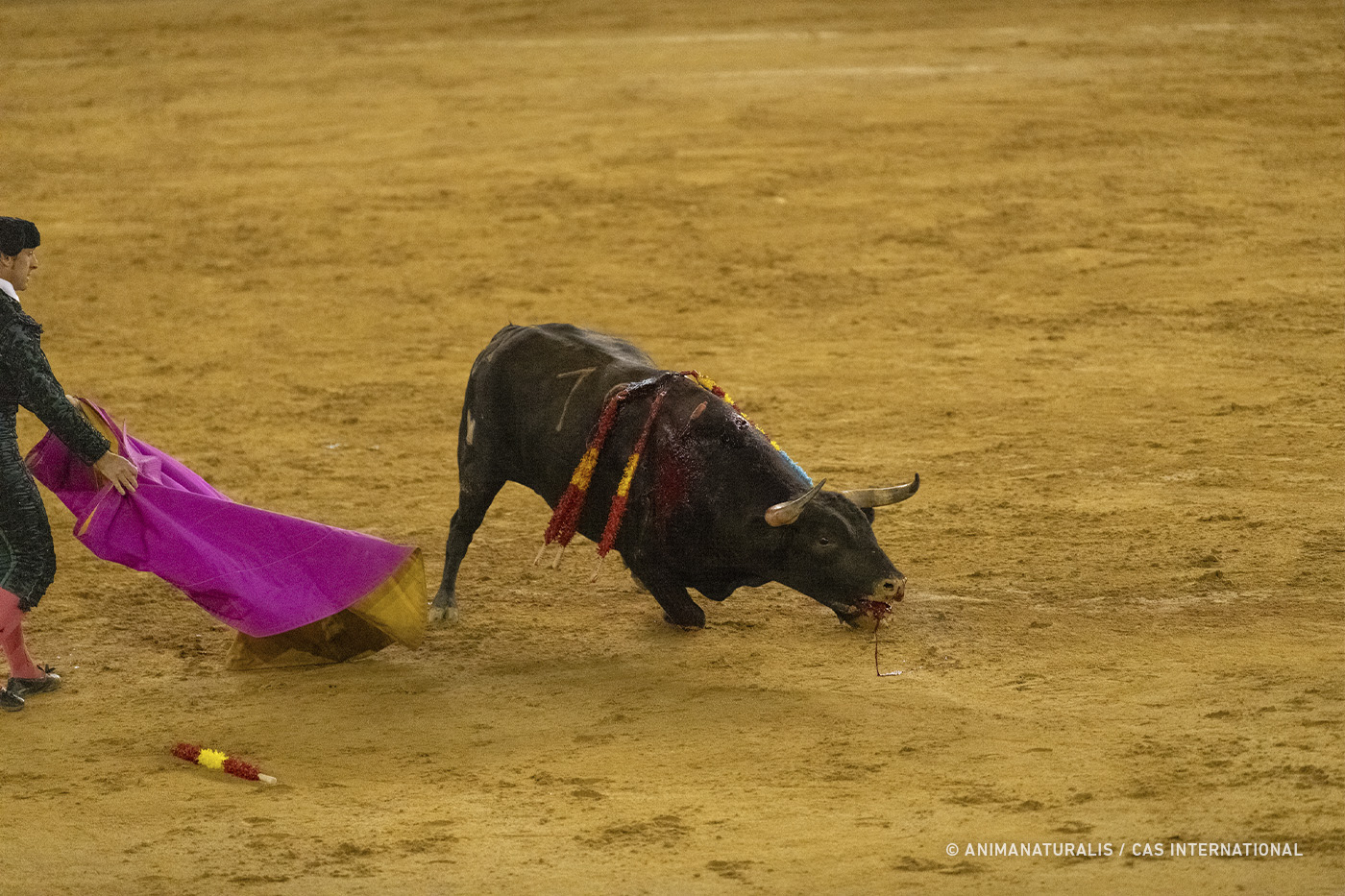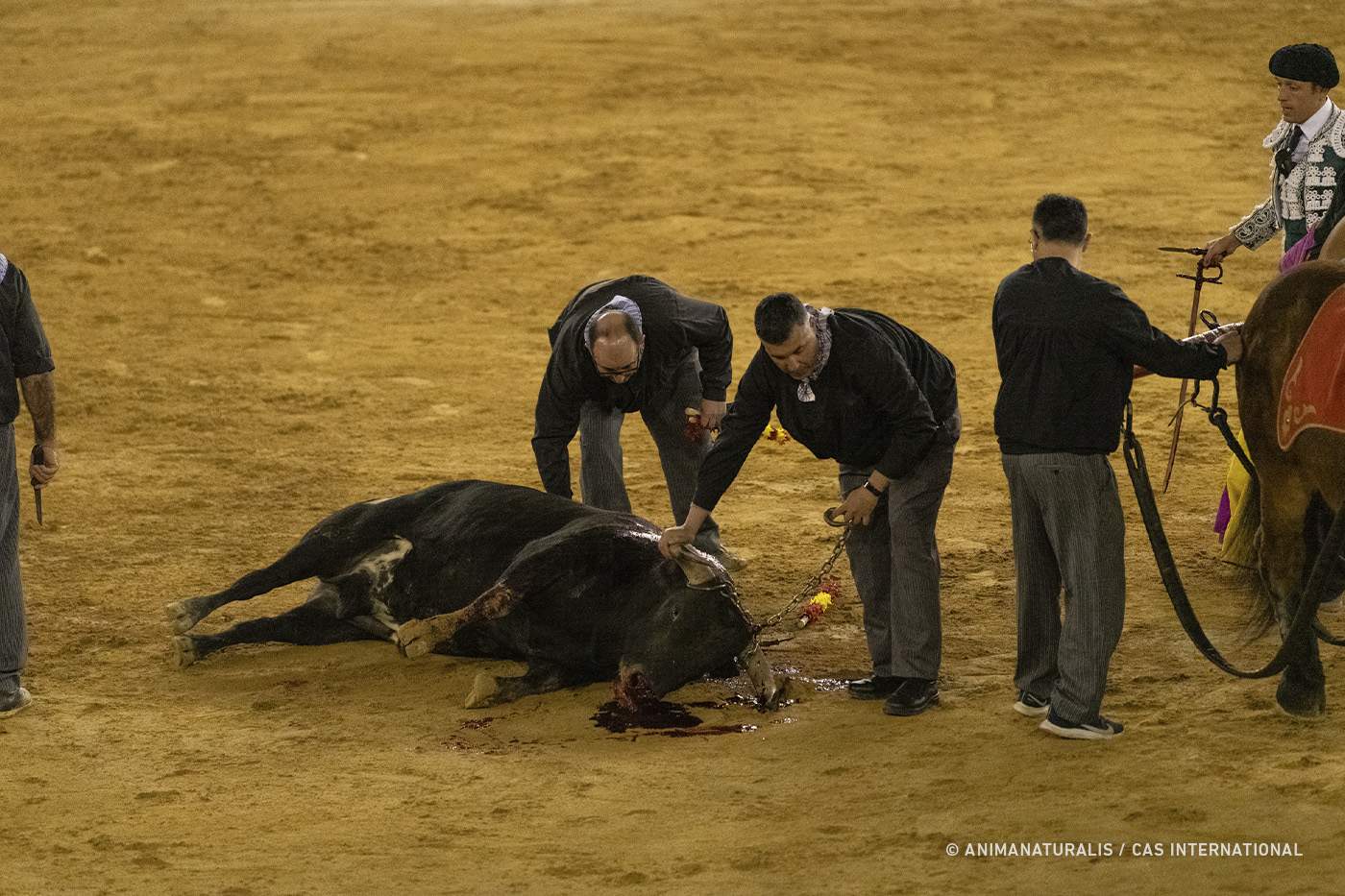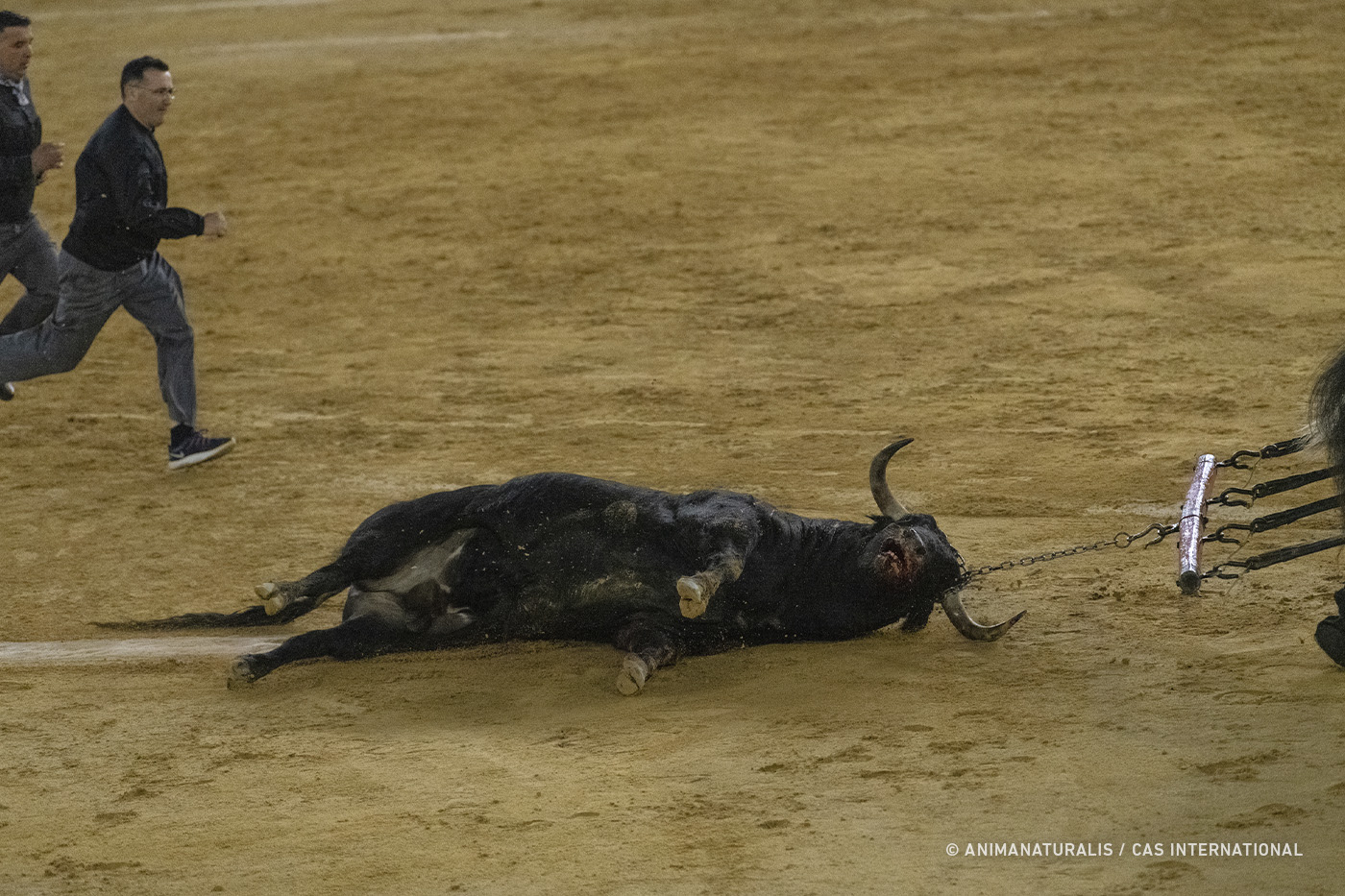Amidst the cold afternoon of March 9, 2024, the València bullring turned into a scene of horror and suffering for the animals participating in the inaugural novillada of the Fallas bullfighting season. As clouds darkened the sky and a persistent drizzle created a sad and gloomy atmosphere, Afanoso, Bravío, Endiablado, Sanluqueño, Corbecero, and Artesano were subjected to public torture in the name of entertainment and tradition.
The young bullfighters Alejandro Peñaranda, Samuel Navalón, and Alberto Donaire emerged as protagonists of a tragedy that unleashed cheers and applause, while the blood of the innocent stained the sand.
The spectacle began with Afanoso, a bull of caramel brown color, whose strength and vitality quickly faded under the blows and the final thrust. After the sword was thrust into him, the bull collapsed, gasping and with eyes wide open, an image reflecting the final suffering before death.
Bravío, with his white body and black head and legs, was next on the list of victims. Wounded by the picador's lance, he fought desperately as blood stained his sides. Despite his agony, he continued to charge, only to be repeatedly stabbed until his final fall, which came only after multiple stabs in the neck.
Endiablado, showing a deep wound from the outset, plunged into a spiral of pain and disorientation. Battering his head against the barrier in his frantic search for escape, he found only more suffering under the torero's hand, who stabbed him again and again until his final collapse.
Sanluqueño, with black fur, experienced a prolonged and atrocious death, convulsing and spitting blood for over a minute before finally succumbing amidst applause and cheers, a tragedy that seemed only to increase the fervor of the audience.
Corbecero, the most imposing in size, remained upright even after falling to the ground, fighting his fate until the last moment, a resistance that only heightened the cruelty of the final act.
Artesano, after grappling with the horse and falling to the ground without receiving the final thrust, experienced an equally tragic outcome. Blinking and moving his eyes as he was led to his death, his agony did not end with his last breath, but continued even after being tied for transport.
But the cruelty did not end in the arena. Out of sight of the public, an improvised slaughterhouse awaited. In that place, the bodies of the bulls were stripped of all dignity, reduced to pieces of flesh for human consumption. A macabre image that contrasted with the celebration taking place in the square.
What Happens to Animals During Bullfights?
During the bullfight, which can last up to twenty minutes, the bull is subjected to agony comparable to any case of torture. This process not only causes extreme and prolonged suffering to a sensitive and defenseless being but does so without its consent, making it a silent victim of human cruelty.
The bullfight is divided into three stages, each designed to inflict physical and psychological harm on the bull systematically. In the first stage, a puya causes an injury to the muscles responsible for head movement, limiting its sensory capacity and increasing the animal's stress and suffering.
In the second stage, six banderillas are driven into the bull's shoulders and/or hump, designed to ensure that the puya remains in place and causes additional pain as the bull moves. These banderillas aggravate the wounds and increase bleeding, adding to the animal's agony.
Finally, in the last stage, the matador thrusts a curved sword with the aim of reaching the bull's heart. However, more often than not, the sword causes injuries to the lungs and bronchi, leading to death by suffocation or bleeding out, while the bull remains conscious of its surroundings and pain.
Even if the bull does not die immediately, the puntilla is performed, where the spinal cord is severed to induce the animal's death. However, this is not always effective, and the bull may remain conscious, moving its head and eyes, while silently suffering.
Scientific studies have shown that bulls exhibit behaviors indicative of distress, such as tail swishing and rapid breathing. Furthermore, post-fight analyses have revealed imbalances in blood pH and lactate levels, indicative of muscle fatigue and extreme suffering.
#NoEsMiCultura Initiative
In response to this issue, the Popular Legislative Initiative #NoEsMiCultura (#NotMyCulture) has been conceived, a citizen action aimed at repealing Law 18/2013 which protects bullfighting as cultural heritage. This law, enacted in 2013, not only perpetuates the practice of bullfighting but also limits the autonomy of municipalities and autonomous communities to regulate or prohibit these spectacles, putting popular will and ethical values that reject cruelty to animals on the back burner.
The backing of more than 50% of the Spanish population for the prohibition or restriction of bullfights (SocioMétrica survey for El Español, 2019), as well as the support of numerous animal protection and environmental organizations, underscores the urgency and relevance of this initiative. The Popular Legislative Initiative, presented on January 4, 2024, and admitted for processing by the Congress Committee, represents a real opportunity for the voice of the citizens to be heard in the legislative sphere.
For those who wish to join this cause and actively contribute to change, there is the possibility of becoming authorized agents, that is, registered individuals to collect signatures. To do so, simply contact the Promoter Commission directly through contacto@noesmicultura.org, indicating the interest in becoming an authorized agent. This action not only represents an opportunity to promote respect for animals but also to strengthen participatory democracy and the capacity of civil society to influence significant political decisions.
In conclusion, the Popular Legislative Initiative #NoEsMiCultura (#NotMyCulture) represents a crucial step towards a fairer and more compassionate society, where traditions cannot justify the suffering and exploitation of animals. If we want to build a more ethical and humane future, we must unite in this effort to abolish a practice that goes against our fundamental values of respect and empathy for all forms of life. For more information and to collaborate, visit NoEsMiCultura.org.



